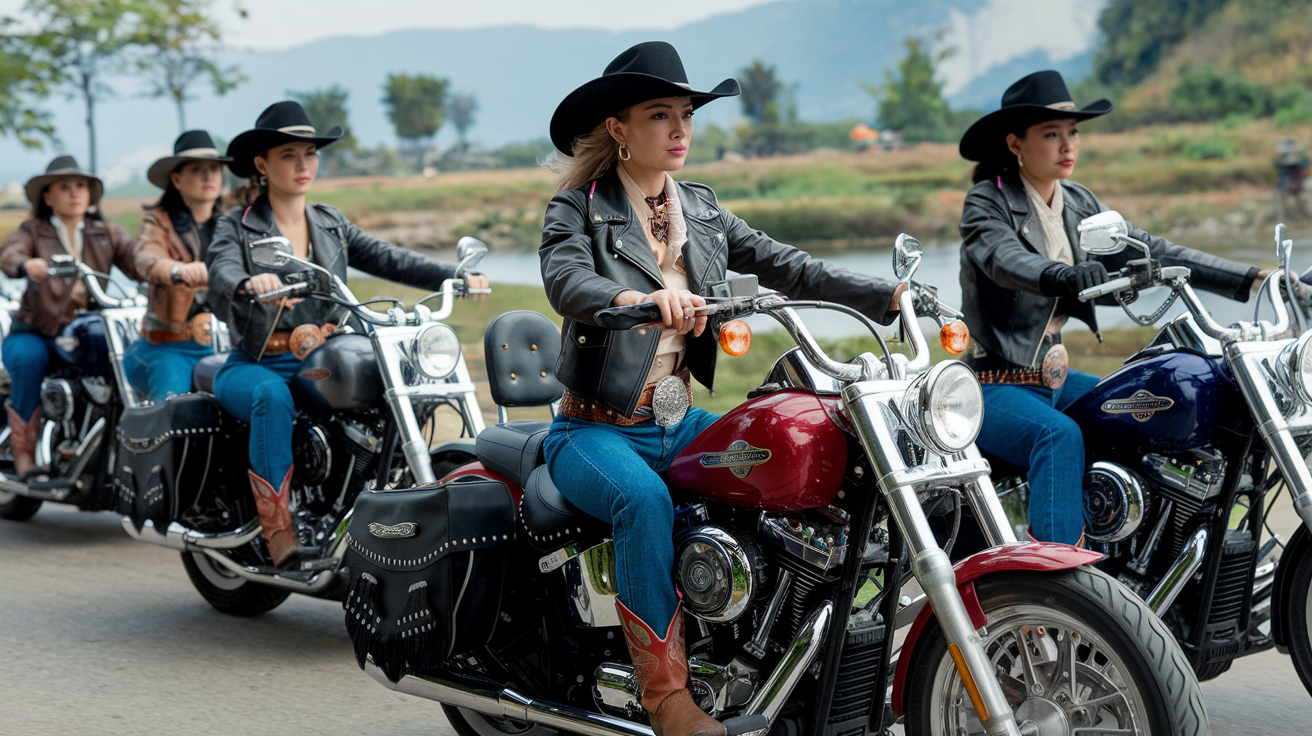Bike Rider Cowboy Wear in Vietnam: Fusing Western Style with Local Culture & Tradition

Strong 8k brings an ultra-HD IPTV experience to your living room and your pocket.
In the streets of Vietnam, especially in urban centers like Ho Chi Minh City and Hanoi, motorcycles dominate the roads. Riders from all walks of life rely on bikes not just for transport but as an expression of style and identity. In recent years, an intriguing fashion trend has emerged at this intersection of utility and self-expression: the adoption of cowboy wear by Vietnamese bike riders. While the cowboy look is rooted in American Western culture, its integration into Vietnamese street fashion offers a unique blend of global influence and local adaptation.
A Brief History of Cowboy Wear
Cowboy wear has its origins in the American West during the 19th century. Designed for rugged utility, the iconic elements of cowboy fashion include wide-brimmed hats, denim jeans, leather boots, fringed jackets, and durable shirts. These clothes were functional for horse riding, protection from the elements, and long days spent outdoors. Over time, cowboy wear also became a symbol of independence, adventure, and rebellion.
Hollywood further popularized the cowboy image through films, music, and television, creating a style that is recognized worldwide. What was once purely practical attire evolved into a fashion statement with a strong cultural and emotional resonance.
Motorbike Culture in Vietnam
Vietnam is home to millions of motorbikes, making it one of the most motorbike-dense countries in the world. The bike is more than just a vehicle; it is a lifestyle. People use bikes to commute to work, transport goods, travel long distances, and even as mobile cafes or shops. The motorbike culture is deeply ingrained in daily life.
With this culture comes a need for appropriate attire. Vietnamese riders often look for clothing that provides protection from sun, dust, wind, and road debris. Fashion also plays a role, especially among younger generations who are influenced by global trends and use their appearance as a form of self-expression.
Cowboy Wear Meets Vietnamese Roads
At first glance, cowboy wear might seem out of place on the streets of Vietnam. However, many aspects of this style align well with the needs and values of Vietnamese motorbike riders. Wide-brimmed hats offer sun protection, while leather jackets provide both style and a layer of safety. Denim is durable and practical for long rides. Cowboy boots, although not designed for biking, contribute to the bold aesthetic that many riders seek.
More importantly, cowboy wear represents freedom and individuality—qualities that resonate with motorbike riders who value the autonomy that two wheels afford. For many, dressing like a cowboy while riding is a statement of personal style and cultural fusion.
The Local Twist
Vietnamese cowboy wear is not a direct copy of the American version. Instead, it has been adapted to suit local tastes, weather, and traditions. For example, instead of heavy wool or leather, riders often choose lighter, breathable fabrics that mimic the cowboy aesthetic. Hats are modified to include traditional Vietnamese conical shapes or materials. Embroidery and patterns may reflect local artistic styles.
Color schemes are also localized. While American cowboy wear traditionally favors earthy tones, Vietnamese adaptations might include brighter colors or floral motifs. This blend maintains the spirit of cowboy fashion while making it more relevant and comfortable in Vietnam’s tropical climate.
Cultural and Social Influences
The rise of social media, travel, and pop culture has contributed to the growing popularity of cowboy fashion among Vietnamese riders. Music videos, movies, and Instagram influencers often showcase cowboy aesthetics, sparking interest among fans who want to incorporate these styles into their daily lives.
Events like motorbike festivals or themed photoshoots also encourage this cross-cultural fashion experiment. Riders gather in groups, dressed in cowboy outfits, to celebrate both the motorbike lifestyle and their shared appreciation for Western-inspired fashion.
Interestingly, this trend is not limited to any one age group. While younger riders may be more likely to adopt bold, Instagram-friendly outfits, older riders also find nostalgia and pride in the cowboy identity, which aligns with traditional values of hard work, resilience, and independence.
Challenges and Criticism
Despite its popularity, the fusion of cowboy wear and Vietnamese motorbike culture is not without critics. Some argue that adopting foreign styles may dilute local traditions or reflect a form of cultural mimicry. Others worry about practicality, especially when traditional cowboy boots or hats are used in urban settings with heavy traffic.
However, most riders and fashion enthusiasts view this trend as a creative fusion rather than imitation. By blending elements of Western and Vietnamese culture, riders are crafting a new, uniquely local identity that pays homage to both traditions.
Looking Ahead
The evolution of cowboy fashion in Vietnam is still unfolding. As designers and local brands become more aware of this trend, we may see new clothing lines that cater specifically to the motorbike-riding cowboy look. Collaborations between local artisans and fashion designers could result in innovative, hybrid styles that further blur the lines between tradition and modernity.
What remains clear is that fashion, like culture, is always evolving. In Vietnam, the cowboy is no longer just a figure from American history. He is a motorbike rider cruising through busy streets, embodying a spirit of freedom, resilience, and global style with a distinctly Vietnamese flavor.
The rise of cowboy wear among bike riders in Vietnam is more than a passing fashion trend. It reflects deeper themes of cultural exchange, adaptation, and personal identity. By merging Western cowboy wear aesthetics with Vietnamese motorbike culture and local traditions, this unique style illustrates how global influences can be reshaped in meaningful, localized ways. In doing so, it celebrates both individuality and community, tradition and innovation—a true fusion of East and West.
Note: IndiBlogHub features both user-submitted and editorial content. We do not verify third-party contributions. Read our Disclaimer and Privacy Policyfor details.



